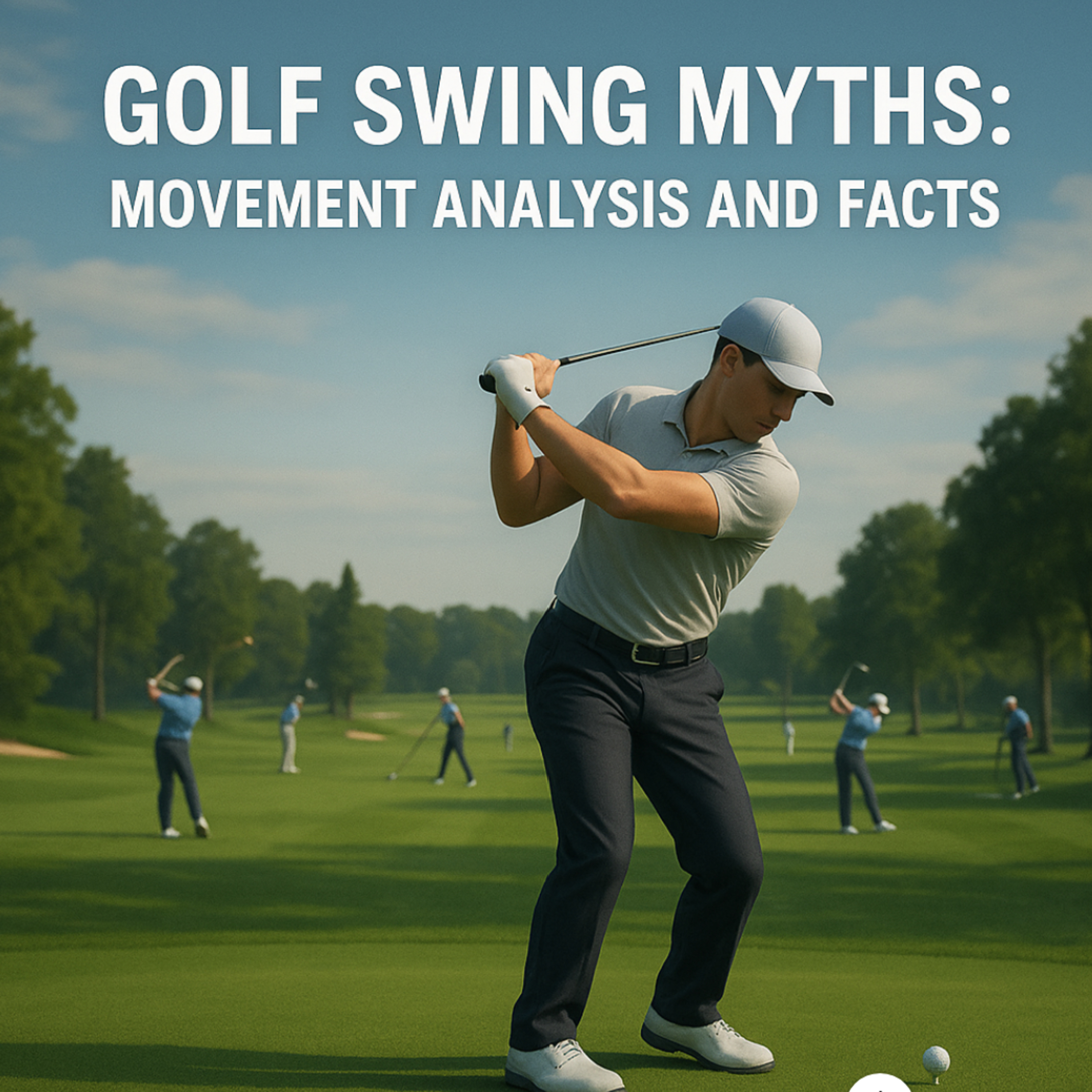#329 Golf Swing Myths: Movement Analysis and Facts
- Author
- Golf247.eu
- Published
- Thu 28 Aug 2025
- Episode Link
- https://podcasters.spotify.com/pod/show/puttin-pro/episodes/329-Golf-Swing-Myths-Movement-Analysis-and-Facts-e37bo76
Source: AI Golf Chatbot 3D Data
Modern 3D motion analysis and data from tour professionals challenge two of golf’s most common myths: that lateral movement (sway) is harmful, and the head must remain perfectly still. In truth, controlled movement, not rigidity, is what leads to powerful, consistent, and efficient swings.
Myth 1: “Don’t Sway During the Swing”
Amateur Belief:
A stable swing requires no hip movement—rotate around a fixed axis, keep the hips in place, and “load” the trail side.
Tour Reality:
Professionals do sway—but in a controlled and purposeful manner.
- Backswing: Pros shift ~0.3 inches with the hips and ~0.1 inches with the shoulders away from the target. This builds tension and coil.
- Recentering: Before the backswing ends (P4), they shift back toward the target—~0.5 inches with the hips. This early recentering activates ground forces.
- Downswing: Average hip shift toward the target is 3 inches. Top players like Rory McIlroy reach 6 inches at impact.
- Amateur Comparison: 30-handicap players show only 2.5 inches of sway at best.
Conclusion:
Instead of eliminating sway, work on early recentering and a strong forward hip shift in the downswing.
Myth 2: “Keep Your Head Still”
Amateur Belief:
A still head helps you stay focused and rotate correctly.
Tour Reality:
The head is stable, not frozen.
- Natural Motion: Pros allow slight head rotation in the backswing, keeping eyes on the ball.
- Transition: The head lowers slightly as weight shifts into the lead leg.
- After Impact: Players like Annika Sörenstam release the head before impact—while maintaining posture.
- Problem with Rigidity: A frozen head blocks weight transfer and limits swing flow.
Conclusion:
A balanced head supports a fluid swing. Don’t freeze it—allow natural motion while maintaining posture and visual focus.
Training Takeaways
- Use Technology: The AI Golf Chatbot app offers real-time 3D feedback for objective swing evaluation.
- Drill Re-Centering: Practice hip-forward drills, like the “hip-to-wall” swing, to improve timing.
- Manage Head Motion: Drills like the shadow drill or a tee between the lips help control excess movement without forcing stillness.
Summary
Tour professionals swing with dynamic control, not rigid stability. They move slightly away from the target, recenter early, and shift hips forward in the downswing—using the ground for power. The head stays balanced, not locked, supporting efficient rotation.
Forget the myths. Train smarter, move better, play stronger.
